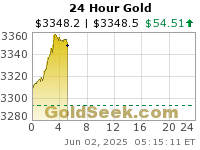Tue. May 28, 2013
This Page is your link to access the daily study I will do for 4 weeks, beginning today, using the True Strength Index (TSI) indicator and a custom indicator I created that measures the percentage daily closing price is either above or below its 200 exponential moving average (ema).
Each day this page will be updated with a direct link to that day's trading activity (new charts and commentary each day for one month).
Stop by as often as you like to see how these two indicators are interpreting price performance.
Ten securities from a diversity of market segments are being studied. These include futures, stocks, bonds and ETFs.
Choose
which day’s charts with signals
you
wish to view:
|
Or, choose to view by specific
ticker symbol:
|
||||
Week 3
|
|||||
Week 1
|
1
|
||||
2
|
|||||
3
|
|||||
4
|
|||||
5
|
|||||
6
|
|||||
Week 2
|
Week 4
|
7
|
|||
8
|
|||||
9
|
|||||
10
|
|||||
Friday
June 21
|
|||||
And check
out the trades so far:
|
|||||

![[Most Recent Quotes from www.kitco.com]](http://www.kitconet.com/images/quotes_special.gif)




Hi John,
ReplyDeleteNice job on the indicator!
When you created your custom indicator, why did you choose EMA over SMA?
Hey Pima - now that's a good question. I didn't even give it a thought because it seems like 'everybody' is fixated on the 200 ema and not the 200 sma. But it's still a good question. Thanks.
DeleteHi, yes, great work John, been following your TSI work for a couple of years.
ReplyDeleteDon't the talking heads on CNBC etc. always use SMAs?
Hi John, any thoughts on Friday's last-minute sell-off? The start of the long-awaited correction, maybe..? Ed.
ReplyDeleteHi Ed - honestly, I don't watch CNBC so I wouldn't know. But if you know that they usually use SMAs I'll take your word for it.
ReplyDeletePima's question about my using EMA vs. SMA was a good one.
A couple posts ago (http://thetsitrader.blogspot.com/2013/05/sayonara-i-wish-gentlemen-start-your.html) I showed readers the effect of using the 200 ema, the 100 ema and the 50 ema *simultaneously*. The upshot was that they had very similar and useful signals, though the length of their moving averages varied considerably. The shorter the moving average length the more signals it tends to generate, but when a longer moving average indicator gives a signal the shorter moving average indicator gives the same signal at the same time.
I guess what I am trying to say Ed is that changing the moving average length or using sma vs. ema probably does not have a significant effect. My choice to use the 200 length was to try and avoid the case of being a fast trader and instead I was looking for getting signals that would be most valued for their longer term implications.
The last minute sell-off no doubt had something to do with an end of month profit taking event. But your point is well taken and later this weekend I will get all the trades for Monday morning updated - and expect to include shorting the S&P 500.
Thanks for the questions, Ed.
Does it seem that TSI is sometimes better at picking bottoms than tops, like with GDX? http://screencast.com/t/pODLFYP98
ReplyDeleteKJ
Sorry, I mean, buy at an extreme low value of TSI, and figure out how to take profits or protect the entry from massive breakdown from original entry. Like a simple oversold oscillator.
ReplyDeleteKJ
Hi KJ - if I understand your question, you are wondering if the TSI is effective when it is stretched to an extremely high or low reading.
ReplyDeleteIt looks like that would be true, and in the short term it is true, but what more usually happens is that an extremely low reading improves with price finally halting. But because the indicator is BELOW zero, any time price starts to fall again, the TSI will fall also. Look at some charts and you notice entire series of TSI steps towards zero - even as the price continues to make new lows.
Hang in there, baby! Win or lose, this experiment has great value. We have a Fed-centric market to contend with, making short-term trading all the more difficult.
ReplyDelete